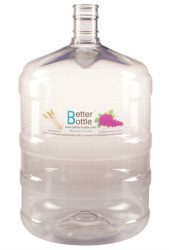
He wanted us to emphasize that, while not an absolute requirement, a "food-safe" label is still an important thing to look for.
"The quickest way to determine what kind of plastic something is made of is by looking at its recycle code if it has one. The breakdown is below:
RC 1 - polyethylene terepthalate (PET)
Most commonly seen as plastic coke bottles, this is a form of polyester. It has high heat resistance and is an excellent oxygen and moisture barrier, making it excellent for homebrewing. One thing to watch out for, though, is that at high temperatures or sunlight exposure, it can degrade and release potential harmful products like phthalates and heavy metal catalysts.
Good properties for homebrewing, but keep out of sunlight and don't pour extremely hot wort into it. Do not use if it is discolored (yellowed)"
[Read More]
